
Starovičky is a small village of about 900 people, about 35 km (22 miles) south of Brno. It's near Hustopeče and only about 19 km (12 miles) from Břeclav.
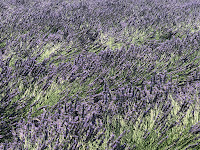


It was a really nice day. Now I want to go back and have a look at nearby Hustopeče.
An American expat adventure in Brno, Czech Republic.

Starovičky is a small village of about 900 people, about 35 km (22 miles) south of Brno. It's near Hustopeče and only about 19 km (12 miles) from Břeclav.



It was a really nice day. Now I want to go back and have a look at nearby Hustopeče.
I received my results a few weeks ago that I passed my B1 language exam. Well, now I have officially passed because today I received my certificate. I now have evidence that I passed the exam. Hurá!
It actually arrived, yesterday, on my birthday. The best present ever!
Now I can start getting together all of the paperwork I need in order to apply for Czech citizenship. I just need to make sure that I don't lose the certificate in the mean time.



It's a good thing that I don't have cake, chocolate dipped fruit and pizza every day. I need to get back on my diet but it was all so good.
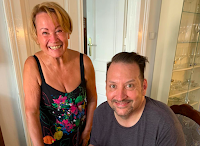

There's another display with Mars, Earth, and the moon. I believe there will be another astronomical exhibition planned in August.
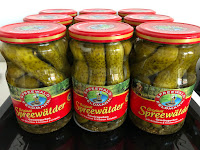
It's not even my birthday yet but the warm up has been great. Due to Covid restrictions, I'm not planning a party or anything but that's ok. I'm looking forward to just going to dinner with Claudia and keeping things low key.


Former members include Azerbaijan, Georgia, and Uzbekistan.
Here's a short video I found out on YouTube about the CSTO.

Today the CIS consists of Armenia, Azerbaijan, Belarus, Kazakhstan, Kyrgyzstan, Moldova, Russia, Tajikistan, and Uzbekistan. In 2005, Turkmenistan became an observer member. In 2008, Afghanistan and Mongolia became observer members.
Georgia withdrew its membership in 2008 following the five-day war when Russia invaded and took control of South Ossetia.

The three Baltic states, Estonia, Latvia, and Lithuania, chose not to participate because they viewed their being in the Soviet Union was an illegal occupation.
Headquarters for the CIS are in Minsk, Belarus.
The goal of the CIS is to coordinate policies regarding its members' economies, foreign relations, defence, immigration policies, environmental protection, and law enforcement.
The CIS spawned three organisations.
The Collective Security Treaty Organization is a military alliance. Kind of like the new Warsaw Pact but made up of former Soviet republics.
The Eurasian Economic Union is basically the Eurasian version of the EU but only consisting of Armenia, Belarus, Kazakhstan, Kyrgyzstan, and Russia.
The Union State is the union of Belarus and Russia with the goal of common government, flag, currency, etc.
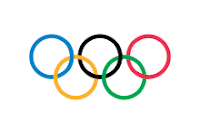
The Union of Soviet Socialist Republics (USSR), the Soviet Union, was established in 1922 and lasted until its dissolution in 1991. It was the world's largest country and it spanned eleven time zones from Europe to Asia. It was a federal union, consisting of 15 republics, all ruled by the Communist Party of the Soviet Union. The capital was Moscow.


The Berlin Wall fell and East Germany became part of a unified Germany. Czechoslovakia split in to the Czech Republic and Slovakia. Except for Russia, every member of the Warsaw Pact joined the EU and is now a member of NATO. Even three former Soviet republics are even NATO members.

Here's a bit about the former Soviet republics.





Georgia considers there regions to be under Russian military occupation. The country is working hard to join NATO which makes Russia uneasy. That's also one of the reasons that Russian troops are stationed in the breakaway republics.





In 1990, an independent Pridnestrovian Moldavian Soviet Socialist Republic was declared. This small area was afraid that Moldova would leave the USSR and try to become part of Romania.
Moldova declared independence from the USSR on 27 August 1991. Fighting broke out between Moldovan forces and separatists in March 1992. Transnistria considers itself an independent country but only Russia recognises it. The Russian 14th Army has 1200 troops in Transnistria that Moldova wants recalled. As part of the ceasefire agreement that has been in place since July 1992 states that if Moldova tries to merge with Romania then Transnistria will be allowed to go its own way.
Moldova is one of the poorest countries in Europe. Many Moldovans have left the country as migrant workers. Money from abroad accounts for almost 38% of the country's GDP. In 2013, Moldova entered an agreement with the EU, placing it on a path to future membership. This is not something that Russia is happy about.

Russia, officially the Russian Federation, is the largest country in the world, stretching from Northern Europe to the Caucasus and from Eastern Europe to Asia. It covers 1/8th of the world's inhabited land area. It spans nine time zones and it's larger than Pluto.
The Russian Federation is made up of 46 provinces, 22 republics, 9 territories, 4 autonomous district, 1 autonomous province and 3 federal cities.
Russia inherited the USSR's seat on the UN Security Council.
Russia claims to have a right to intervene in former Soviet republics to protect all Russian speakers. This was used to invade Georgia in 2008 in the five-day war in South Ossetia as wells as to annex Crimea from Ukraine in 2014.


It is a very closed off country. A visa is required to visit and tourists are only allowed in as part of a group tour.

Under Stalin, Ukrainian nationalism was put down. Forced collectivisation and unrealistic quotas for farmers caused Holodomor, The Great Famine, where millions of Ukrainians were starved to death. Another 7-8 million more people died during WWII.
Ukraine declared independence on 24 August 1991. In 1994, it became the first former Soviet republic to experience a peaceful transfer of power via the ballot box.
Ukraine is the second-largest county in Europe. When the USSR broke up, Ukraine was a nuclear power. In 1996, Ukraine surrendered all of its Soviet-era nuclear weapons to Russia. This was under the condition that Ukrainian territory would be respected. That hasn't worked out so well.
Ukraine wants to eventually join the EU and NATO. Obviously this doesn't sit well with Russia. In 2014, Russia illegally annexed Crimea. Russia has also supported separatists in the Donbas region of Eastern Ukraine. The Donetsk People's Republic and the Luhansk People's Republic border Russia and both unilaterally declared independence on 7 April 2014. Ukraine regards both as terrorist organisations. After seven years of fighting the Ukrainian government has made progress but there are both separatist controlled areas with constant fighting.

Uzbekistan is one of only two double-landlocked countries in the world and it is the only country that borders all of the "Stans".
I've managed to visit 13 of the 15 former republics. I had originally planned on visiting Turkmenistan this year but Covid put that on hold. Here's a short video I found out on YouTube about the breakup of the USSR.

In 2019, Uzbekistan joined the council.

In 2021, Turkmenistan also joined as an observer member so now, except for Tajikistan, four of the five of the "Stans" are members of the council.
Earlier this year, the Islamic Republic of Afghanistan applied for observer status but no decision has been made public yet.
While not an official language, English is a working language of the council.
A friend had a cookout today and asked if I would bring real American cheesecake. Well as "real" as possible given that the ingredients here in Euroland aren't exactly the same. I originally thought that this would be a simple post about me making cheesecake but it's going to be way more complicated than just that so bare with me.

What you can get is Philadelphia cream cheese spread. First, the spread is not the same thing as regular cream cheese. I do know people who make cheesecake with the spread but it doesn't taste the same. A 125g (4.4oz) container here costs 43Kč ($2). This would be kind of pricey to use for cheesecake plus it's not the right ingredient so it would not turn out right.
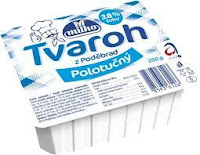
 |
| Tvaroh |
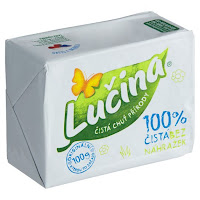
I use lučina for all of my U.S. recipes that requires cream cheese. Lučina comes in little 100g (3.5oz) blocks for 23Kč ($1.08).
In Germany, people use quark. Quark always messes with people because there is no translation for it. When you type the German word "quark" into Google Translate the English translation you get back is "quark". Quark is kind of like cream cheese but not really. It's a soft, fresh cheese that can be used for either cream cheese, ricotta, or even sour cream.
Side note...every child in the USA learns the nursery rhyme about Little miss Muffet.
Little miss Muffet, sat on her tuffet, eating her curds and whey
Along came a spider who sat down beside her
And frightened miss Muffet away


Graham flour is just whole wheat flour that is ground more coarsely. It has just slightly less protein than white wheat flour.
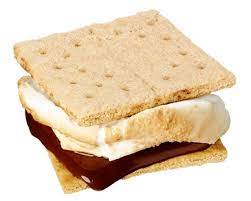

With no graham crackers over here, people use digestive biscuits. Now comes the British English.


In Euroland, people grind up digestive biscuits to use for pie crusts.
The first cheesecake I made for my friend's party was a chocolate peanut butter cheesecake. I used a recipe that I found on YouTube. Here's the video but to be fair I did make a couple of changes.
©El Mundo Eats
I didn't use digestive biscuits for the crust. I have a bag of graham cracker crumbs from a care package so I did make a proper graham cracker curst for the cheesecake.


This thing took hours to make but it turned out really well.

I also used one of the pre-made graham cracker pie crusts that I had from another care package.
Both of the cheesecakes were popular but the chocolate peanut butter one was the winner.





